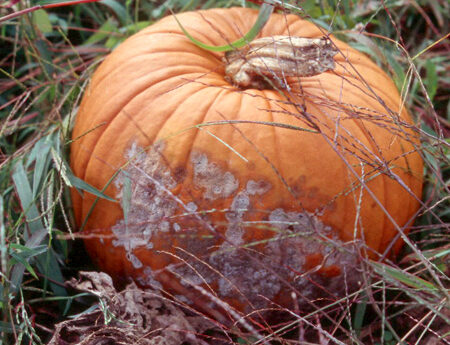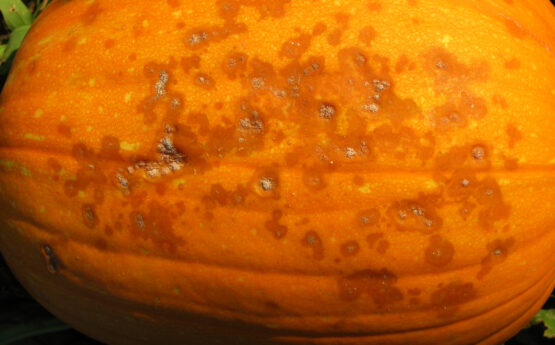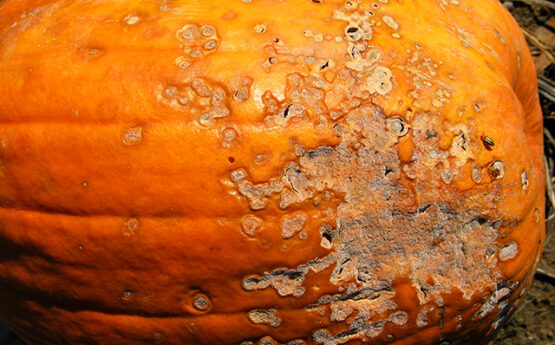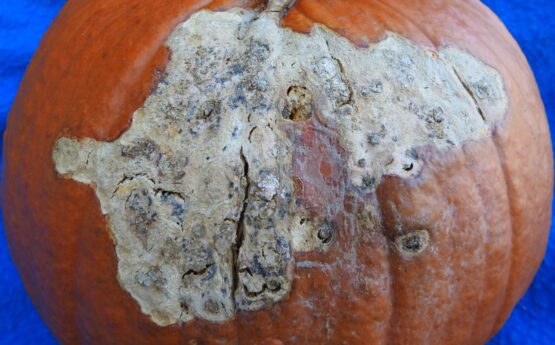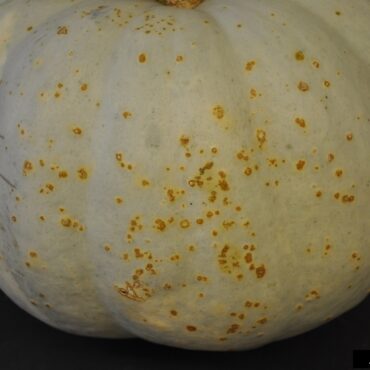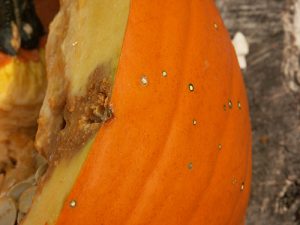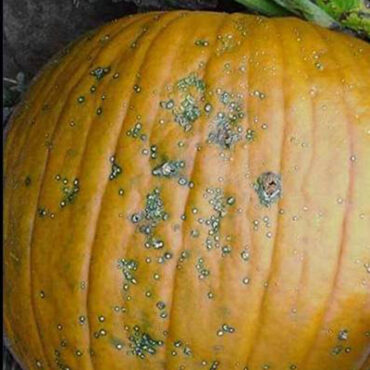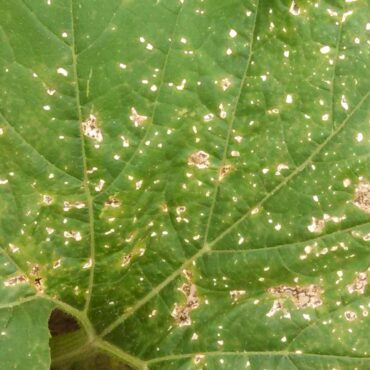Fusarium Fruit Rot
Other Name: Fusarium Wilt of Cucurbits, Fusarium Rot
Pathogen: Fusarium solani f.sp. cucurbitae
Organism: Fungi
Fusarium Rot of Cucurbits is a fungal disease that can affect the roots, stem, and fruit, particularly pumpkins and squash. The disease consists of two different races (pathovars) — race 1 targets the stems, roots, and fruit of the plant while race 2 only targets the fruit. Cool, wet conditions tend to be the most favorable for this pathogen to grow. Infection of fruit is greatest in fruit that is in direct contact with soil. Fusarium rot can also be an opportunistic disease, infecting hosts after winter damage, fertilizer injury or a primary pathogen has weakened the plant, making it more susceptible to other pathogens.
Bacterial Spot
Other Name: Bacterial Leaf Spot, Bacterial Fruit Spot
Pathogen: Xanthomonas cucurbitae
Organism: Bacteria
Bacterial leaf spot is caused by a bacterium called Xanthomonas cucurbitae. Lesions appear first on the underside of the leaves as small, water soaked dots that look yellow from the upper side of the leaf. Lesions are especially small (0.07 inches) in pumpkin, winter squash and gourd leaves. As lesions enlarge (0.07-0.15 inches), they can coalesce and look like ALS. Fruit lesions start as sunken, circular spots (0.04-0.1 inches) that enlarge and can reach up to 0.6 inches in diameter. These openings allow the colonization of the fruit by saprobes or secondary microorganisms that can cause fruit rot in the field or post-harvest. X. cucurbitae can survive in the soil for 24 months when associated with plant tissue.
If you lost your handout, you can download a copy of the pdf here and print it off.

